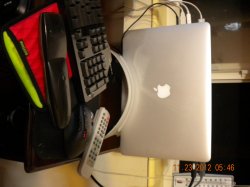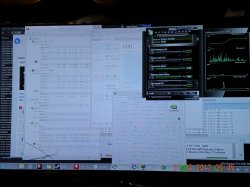My early 2011 Quad Core i7 2.2GHz MacBookPro7,1 worked for Friday afternoon, all day Saturday, then at 17:21pm on the Sunday afternoon. it stopped!
I was running a high CPU (8 thread) and occasionally high GPU computing application, with a long queue of work packages. It was perfect when I launched the app on Friday afternoon. My MBP was specially raised 4cm horizontally off the desk on two solid perspex risers, allowing maximum ventilation. I had keyboard clamshell open. I was running Windows 7 64 bits with the latest drivers for my maxed out BTO GPU card.
My MBP melted the GPU after around 48 hours, ambient temperature was nominal 20 to 22 degC office environment, though the A/C may have been smart-building'd 'OFF' over the weekend.
I'm now having the motherboard replaced as an out of warranty repair, cost is 496.20, which is less than I thought.
My points of view are:
- you might get away with pure CPU work, if you're lucky, (i7 CPU is very protected by intel)
- I'd avoid combined max CPU + GPU processing = shared single heatsink (and I don't know how protected the GPU is - or in my case wasn't)
- I will avoid Windows stress use of the MBP, restricting it to Mac OS X, (maybe Windows doesn't correctly throttle down the system or respond to a stuck element/runaway process/memory leak)
- I am very annoyed by having a melted MacBookPro - I did not expect it to overheat to destruction - and 48 hours is amazingly short
- I may have just been unlucky on the quality control of the heatsink CPU/GPU assembly
- I was able to recover all data via Thunderbolt target disk
- I bought a MacPro which doesn't know the meaning of 'hot'
- and for home use I dropped the idea of a Quad i7 iMac and bought a core i5 dual 2.5GHz Mac mini - I'm not going to have my home computer melting!



